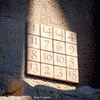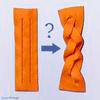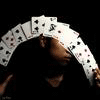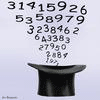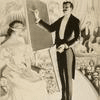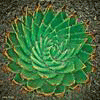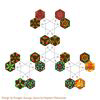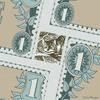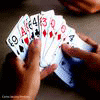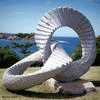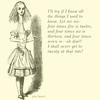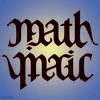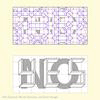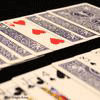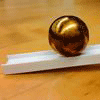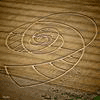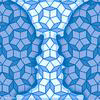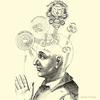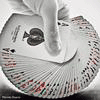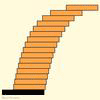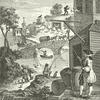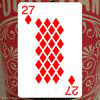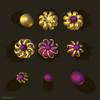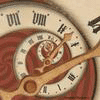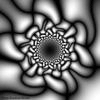Mathematics Awareness Month 2014: Mathematics, Magic, and Mystery
Navigate the Calendar
Hexaflexagons
Here is the one and only Vi Hart to tell you about hexaflexagons:
Taking it Further
Some precautions are necessary when interacting with these highly transmutative devices:
But the rewards can be delectable!
Templates for a myriad of devices in the flexagon family can be had at flexagon.net. More templates, and a complete flexagon party organizer’s kit, are available at this Celebration of Mind site.
The Underlying Mathematics
Hexaflexagons have been studied extensively since their discovery by Arthur H. Stone in 1939. An accessible and thorough introduction to the mathematics of flexagons is Les Pook’s Flexagons Inside Out (Cambridge University Press, 2003). Undergraduate mathematics students can see that the transformations of a tri-hexaflexagon form a group. The paper “Sneaking up on a group” by Jean J. Pedersen (The Two-Year College Mathematics Journal, Vol. 3, No. 2, Autumn 1972, pp. 9–12) gives the essential information, and the follow-up “The faces of the tri-hexaflexagon” (Mathematics Magazine, Vol. 70, No. 4, Oct. 1997, pp. 243–251) digs a little deeper.
Martin Gardner’s inaugural column for Scientific American in 1956. "Flexagons, in which strips of paper are used to make hexagonal figures with unusual properties"", introduced hexaflexagons. It is reproduced under the title "Hexaflexagons" in the anthology The Scientific American Book of Mathematical Puzzles and Diversions (Simon and Schuster, 1959), which appeared later as Hexaflexagons & Other Mathematical Diversions: The First Scientific American Book of Puzzles & Games (Univ of Chicago, 1988) and was then revamped as Hexaflexagons, Probability Paradoxes, and the Tower of Hanoi: Martin Gardner’s First Book of Mathematical Puzzles and Games (Cambridge University Press, 2008). It is also available in the CD compilation Martin Gardner’s Mathematical Games: The Entire Collection of His Scientific American Columns on one CD (MAA, 2008). Gardner discussed that first column in an interview for the The Two-Year College Mathematics Journal in 1979, available here.



